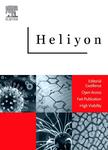版权所有:内蒙古大学图书馆 技术提供:维普资讯• 智图
内蒙古自治区呼和浩特市赛罕区大学西街235号 邮编: 010021

作者机构:Environmental Group Energy Department Materials and Energy Research Centre Alborz Iran Department of Applied Chemistry Faculty of Gas and Petroleum Yasouj University Gachsaran 75918-74831 Iran Department of Applied Chemistry Faculty of Chemistry Razi University Kermanshah 67144-14971 Iran
出 版 物:《Heliyon》 (Heliyon)
年 卷 期:2025年第11卷第1期
页 面:e41432页
基 金:Iran's National Elites Foundation INEF
主 题:Antibiotic separation Deep eutectic solvent (DES) Modeling and optimization Polyetherimide (PEI) membrane Surface-modified membrane
摘 要:Low performance and the high fouling tendency of Polyetherimide (PEI) membranes prevent their widespread commercial utility. In this study, we utilized a deep eutectic solvent (DES) as a versatile agent for surface modification of the PEI membrane using a simple and sustainable method. To attain an efficient PEI membrane, modeling and optimization of the modification condition were conducted via response surface methodology (RSM). The effects of two effective variables, including the choline/guanidine (Ch/Gu) ratio (0.5–2) and modification time (12–48 h), were evaluated on four responses, i.e., pure water flux (PWF), flux recovery ratio (FRR), irreversible fouling ratio (Rir), and total resistance (Rt). The structural and chemical characteristics and filtration performance of the fabricated membranes were evaluated. The optimum condition was obtained at a 0.8 Ch/Gu ratio and 30 h of modification time to reach the best performance of the DES-PEI membrane. The industrial application of optimally modified DES/PEI membrane was investigated by filtering penicillin and cephalexin antibiotics. The rejection data showed higher performance of the modified membrane (95 %) compared to the bare membrane (∼63 %). Furthermore, the long-term filtration evaluation in dead-end and cross-flow setups indicated stable flux and rejection of the DES/PEI-modified membrane. The DES, including Ch/Gu, can be viewed as an agent to enhance both PWF and antifouling properties while broadening membrane applications in separating antibiotics for PEI membranes through an eco-friendly and cost-effective method. © 2024 The Authors